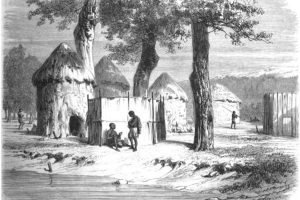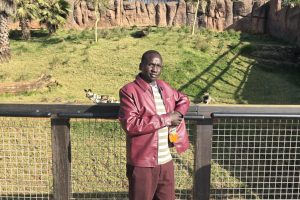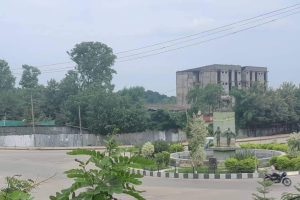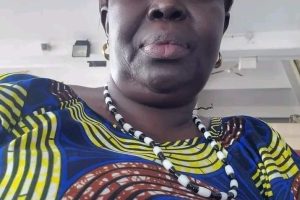Nuer Ethiopian citizenship didn’t come as a result of South Sudanese Refugee Resettlement as Anywaa alluded to. The Nuer Ethiopian citizenship came way back before any civil war in the Sudan occurred.
However, before dealing with Nuer Ethiopian citizens, one would like to pinpoint that Nuers are among the Nilotic people of Eastern Africa. The majority of them live in South Sudan around the junction of the Nile River with the Bahr el Ghazal and Sobat Rivers, and some of them are living in Ethiopia.
The Nuer Ethiopians live in Akobo, Jikow, Wanthow, Lare, Nyinenyang (Makuey) and Itang special district. They also live in Gambella National Regional State. Whoever deemed their citizenship as a refugee influx will find the truth in this rather not lengthy article.
Historically, both Anywaa and Nuer used to live in what is now North Sudan due to multiple push factors, like the Arab invasion when they crossed the Red Sea through Egypt and later penetrated into Sudan in twelfth century, the periods of Turkiyya (1820–81), the Mahdiyya (1881–98), the Anglo-Egyptian Condominium (1898–1956), South Sudanese including Anywaa and Nuer who are now living in Ethiopia were pushed Southward and Anywaa moved first.
The history of Anywaa settlement in the Gambella region dates back to the 17th century, whereas the Nuer settlement started later in the 18th century. The presence of the Gaatjaak Nuer on both sides of the Ethiopia-Sudan border has its background in the “scramble for Africa”. When the Berlin Conference of 1884-5 was convened and organized by Otto Von Bismarck aiming to divide Africa peacefully among the European powers, appetite for more land, the situation prompted the Great Britain to delimited the Sudanese borders, just to keep other European powers out of the Nile Valley.
A good example was the case of Italy. In order to keep Italy, which was then the colonial power in Eritrea out of the Sudan, the border with Ethiopia had to be delimited. Italy was suspected of having an interest in annexing Ethiopia. Hence, the process of demarcation started in the summer of 1899 when Major Charles W. Gwynn was ordered to explore the area from the Blue Nile to Baro/Sobat.
When the explorers made their recommendation, they, therefore, suggested that the boundary should run from Ethiopian highlands through the Akobo River. The recommendation was acceptable to both Addis Ababa and Khartoum. The two countries concluded their agreement by signing the Anglo-Ethiopian Treaty on May 15,1902. This is how the Gaatjaak Nuer were divided among the two countries. In the border politics, some issues came up, challenging the two governments.
The issue of trade between the two countries, such as the distance between Gore and Malakal, was very long and needed to be shortened given some existing mutual interest between the two governments. British colonial government of the Sudan needs coffee and liquor from Ethiopia, while Ethiopia needs salt and clothes from Sudan. Gambella became one of the long border trading posts between Ethiopia and the Sudan administered by the Anglo-Egyptian Sudan established in 1905 by Ahmad Effendi Rifat as the Sudanese custom inspector.
The area was later administered by British administrators, including Lee Marsh and the longest serving DC of Gambella Captain J.K. Jack Maurice, who served from 1928 to 1949. Once Jack Maurice had left, the end came inexorably to the Gambella Enclave. In 1951, the Kanyazmatch Asfaw Abege informed Captain Harry Dibble, who had replaced Maurice, that he no longer had the right to judge or imprison anyone.
The merchants were bullied and browbeaten to buy in currency despite their constant refusal to exchange surplus Ethiopian dollars for Egyptian pounds. In 1954 Asfaw Abege simply announced to Dibble that Ethiopia was taking over the Enclave upon his departure on 30 October 1954, much to the annoyance of the Sudanese, but the acting governor of the Upper Nile, M. O. Yassein, with eminent good sense, realized that the end of Gambella was at hand.
No longer would Upper Nile steamers call at Gambella; the merchants were finally leaving; and “I think it is far better for our future relations with Ethiopia if we read the signs of the changing times now and decide to bring the agreement of May 15, 1902 about the Enclave to an end.” On 24 April 1956, a Sudanese delegation consisting of Sayyid M. O. Yassein and the permanent undersecretary from the Ministry of Foreign Affairs met in Addis Ababa with the Ethiopian vice-minister for Foreign Affairs, Blatta Dawit Ogbagzy and, from the Ethiopian Finance Ministry, Ato Menassie Lemma, and agreed to hand over Gambella to the Imperial Ethiopian government on 15 October 1956.
The Sudanese were particularly concerned that the hydrological measuring would continue, and the Ethiopians assured them they would. Thus, the Baro Salient remained firmly in Ethiopian hands, and for the next fifty years a sanctuary from which Southern Sudanese insurgents have harassed the Sudan army in its futile attempts to establish control in the Upper Nile Province. On the eastern Sudan frontier, nothing changes, only the players.
Though there was government presence in the region, tribes always fought each other. There have always been fighting between Anyuak and Nuer. One well-known incident was the battle of Biot Kwoth in 1911-12, in which Diw Majaak, the Anyuak leader, was killed.
By the time Teferi Mekonen was crowned King of Ethiopia and later took the name Emperor Haile Selassie in 1930, chief Koryom Tut Gor was invited to witness the crowning. This indicated that Nuer didn’t come to Ethiopia as a refugee. Three years later, Selasie allowed a conference to be convened in Gambella between Ras Mulugeta, who was the governor of Gore, Fitaurari Haile Mariam, who was the acting governor of Sayo-Welega province and A.G Pawson, who was governor of Upper Nile of Sudan.
The three men concluded the conference by signing the Gambella agreement, which provided for the establishment of an Ethiopian administration in the region. In order to implement the terms of the agreement, the Emperor had to appoint an Imperial agent to rule the Anyuak and the Nuer. Upon a recommendation from Mulugeta, Haile Selassie appointed a Lebanese born Syrian, Kanyazmach Majid Abud Ashker. In 1933, Majid took a tour through the region, started from Anyuak country, and went all the way down to the confluence of Akobo and Baro/Sobat Rivers.
Since then, skirmishes began to be nonstop between Anyuak and their neighbors, including Nuer, Komo, majanger, and many others. This led to the establishment of the Anyuak based Gambella Liberation Movement (GPLM) aiming to fight with Nuer and highlanders. In 1980, they coldbloodly murdered Ethiopian teachers in Chotgur. After this barbaric killings, Anyuak escaped to Sudan. Times without number, attempts were made by the Anywaa power elites to force out other ethnic groups, including Nuer, Highlanders and many others from Gambella region on the ground that these other ethnic groups are not belong to Gambella.
This idea of provoking other ethnic groups as non Gambella citizens has been entertained by Anyuak for a very long time. Unless a clear citizenship residency is issued by the federal government of Ethiopia, which aims at seeing all Gambella ethnic groups, including highlanders, as equal citizens. The absence of proper management of Gambella citizenship may result in Anyuak regular killing of other nationalities.
According to the Ethiopia constitution, the right to the land ownership of both rural and urban areas is vested in State. In this case, land is a common property of the nation. This means that the federal government of Ethiopia has the right to question those who see non Anywaa as foreigners in Gambella.
It is well-known that some Anywaa have formed resistance armed groups since December 2003 retaliation of ARRA employees’ killing. These armed groups are responsible for the instability and killing of innocent Nuer and highlanders in Gambella. Since December 13, 2003, there has been a peace by default between the Anywaa and the Nuer. This peace was derivative of Anywaa-highlanders conflict.
Throughout the violent clashes between the Anywaa and the highlanders, the Nuer were not involved in either side. Contrary to Anywaa expectations, the Nuer have not made use of Anywaa’s trouble relations with the highlanders to settle old scores. In fact, Newland, the Nuer Neighborhood in Gambella town became the safe heaven for the Anywaa who fled the massacre they were subjected to following the killing of ARRA employees in 2003.
In conclusion, Anywaa needs to remorse from seeing Nuer, highlanders, or other ethnic groups in Gambella as refugee and non Ethiopia citizens. It is up to the federal government of Ethiopia to determine the political boundaries and the citizenship of all ethnic groups in the country, not a handful tiny tribe in the region.
The federal government needs to pay attention to Gambella that Anywaa ethnic group is destabilizing the region. Momentarily, tension is in its highest peak given that Anywaa killing Nuers and highlanders simply by claiming Gambella land ownership. We urge the centrel government to take necessary measures as far as Anywaa persistent aggression violence is concerned.
Sincerely yours
Nuer Ethiopian citizens in Diaspora









